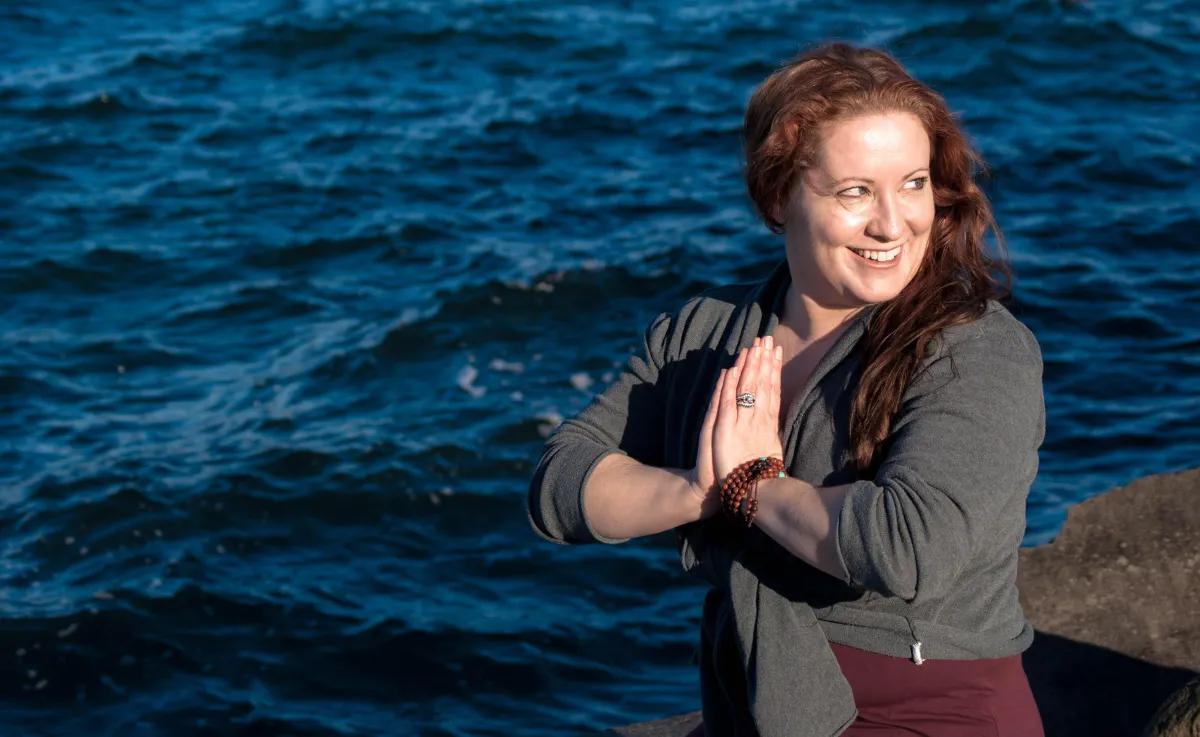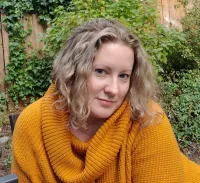Ideas for You
personalizing yoga for yourself

How Yoga Heals
“Yoga teaches us to cure what need not be endured, and to endure what cannot be cured.” - B.K.S. Iyengar
For me, yoga is a lot like duct tape: it may not fix everything, but it sure comes in handy for most of life’s challenges. Over the years in my own practice I have leaned into yoga to overcome a long battle with insomnia, to relieve chronic hip and back pain, to help manage a severe anxiety disorder, and even to work my way through a season of clinical depression. These are pretty fantastic claims, I know, but time and again, yoga has proven to be a very reliable complimentary medicine for me. And surely I am not alone in that.
Spoiler alert: it wasn’t all asana (physical yoga postures).

Hands down my favorite aspect of the yoga tradition is that it was developed to help every individual holistically. Yoga offers a broad range of health benefits because it is a system founded in the philosophy that we are multi-dimensional beings. We are more than our physical bodies. We are more than our physiology. We are more than our mind. We are all of these interactively and more.
In yoga, we can apply the koshas, a metaphoric map for viewing ourselves holistically. The panchamaya kosha model is a framework used to illustrate how sophisticated we are individually. I refer to this model to help discern which yoga practices and tools to offer folks in order to give them a yoga practice that best serves them through all their multi-dimensional layers.
Annamayakosha encompasses the physical body, primarily the musculoskeletal system, but includes all the cells, tissues, and systems in the body. Asana (postures) is the primary yoga tool used to address imbalances, weaknesses, etc. in this part of us.
Pranamayakosha refers to the energetic and physiological part of our body, such as the vitals that reflect how our pulmonary system, cardiovascular system, etc. are functioning. Pranayama (breath work) is the primary yoga tool used to address energetic/physiological imbalances, irregularities, or deficiencies.
Manomayakosha represents the intellectual and emotional aspects within each of us (e.g. habitual trains of thought, knee-jerk emotional reactions). Yamas, Niyamas, mantra and some meditation techniques are the primary yoga tools used to address imbalances, or overcome habits within this part of us, if those habits are hindering us.
Vijñanamayakosha refers to the very subtle aspect within us where our deeply-rooted beliefs and inner-wisdom reside. This is the aspect within each individual that allows for reflection and insight into ourselves and our world. Meditation is the primary yoga tool used to connect with this level of ourselves.
Anandamayakosha is considered the deepest, or most subtle, aspect within each of us that, when experienced, is a profound sense of blissful connectivity and peacefulness. Because it is so subtle, it is easily overshadowed by our experiences of the other four koshas. Practicing ishvara pranidhana (a reverence for something grander than ourselves) and seva (selfless service, such as in Karma Yoga) are the primary means of connecting to this level of our being.
For a more thorough look at the philosophy, read Linda Johnsen’s article for Yoga International. For a look at how this abstract concept plays out in real life, read on, my friend…
How can yoga improve my sleep?: A Pranamaya remedy
My mother says I gave up napping before my first birthday. I am sure this is no exaggeration because for the first 20-some years of my life, I cannot remember ever getting a good night’s sleep. It was hard to fall asleep. I would toss and turn. The later I fell asleep, the earlier I seemed to wake. And I rarely ever woke feeling well rested or refreshed no matter how many hours I slept.
At one point in my teenage years, I muddled through life with a collective 45 minutes of sleep over five days. Over. Five. Days. It is not a pretty sight. Bodily functions start shutting down with that kind of sleep deprivation.
In college, insomnia began affecting my schoolwork and attendance. And paying tuition is so much more painful when you are not making the grades. So, I went to see the Doc.
Prescription medications were disappointingly ineffective. Self-medicating (with whiskey being my medication of choice) was counterproductive. Finally, the psychologist working with me said, “girl, you have got to find yoga, or start smoking a whole lot of pot! You need to get your nervous system settled - as in yesterday. You cannot go on like this.” This was, of course, many years before medicinal marijuana was available, and I was at college in the good ole Bible Belt of the U.S.A. So… yoga was the obvious choice!

My first yoga class was a college P.E. course taught by a local yoga studio owner. She said, “the college asked me to teach only the postures because it is just for P.E. credits, but you can just do the postures I teach – and breathe – and trust that that might be enough to get the ball rolling toward better sleep.” So, I showed up, remembered to breathe, did the postures dutifully (which in yoga jargon is called tapas), and although the how and why were beyond me, for the first time ever, I started sleeping well. Couldn’t explain why it worked, but I committed to stick with it because it did work.
How can yoga relieve chronic pain?: An Annamaya remedy
After college, I returned to the pacific northwest and kept up a yoga practice with various teachers and studios in the neighborhood – although it became admittedly sporadic during the transition from college student to the adulting world of marriage and mortgages.
Then, through a span of three years, I was twice pregnant, and dutifully did my prenatal yoga DVDs throughout both pregnancies – as continuing with the inversion practice of my Iyengar teachers or the intense practice of my Ashtanga teachers was a pregnancy no-no. Funny thing though, it turns out a girl can injure herself doing prenatal yoga, too.
After being decidedly “done” having children, when my son was little more than a year old, I enthusiastically jumped back into yoga only to find that my body didn’t yoga the way it used to. And what’s worse, when I tried to make it do yoga like it used to, it would complain bitterly in the form of hip and low back pain that would leave me limping. One day, I couldn’t get off the couch because my back had seized – not a condition conducive to caring for two kids under three. This lead me to my first yoga teacher training program in an attempt to figure out why.
By the time I finished my 200 hour training, the intermittent complaining from my back and hips turned into constant griping. The list of Poses-I-Could-Once-Do-But-Now-Hurt grew. No Natarajasana (king dancer pose). No Parsva Bakasana (side crow pose). No Uphavista Konasana (wide-legged seated forward fold pose). Within a year, I was enrolled in an advanced teacher training with a certified yoga therapist.
My 500 hour advanced teacher training was actually closer to 900 hours of studying, which I will sum up as: Wow! The human body is amazing, and sophisticated, and fascinating! And what’s more, it is incredible how much our physiology, mental health, thought patterns and habits influence our body and vice versa!
Concurrently with the trainings, I was spending plenty of time with the M.D.s in an attempt to pin down the culprit of my pain. I was checked out for everything from appendicitis to liver cancer, and treated for everything from sciatica to indigestion… I even saw a shrink to confirm the pain was not just in my head! The end conclusion: probably sacroiliac joint disfunction as a result – at least in part – of hanging in my ligaments during prenatal yoga (when pregnancy hormones make ligaments particularly vulnerable to over-stretching). While it felt really lovely at the time, hanging in my ligaments and tendons had overstretched or tore tissue that is meant to hold my hips/pelvis/low back stable. BIG oops!

What took three years of pregnancy/early motherhood to damage plus three years of poking, prodding, testing, and wondering to figure out, took many more years to begin healing. The hip is still a work in progress: Got Uphavista Konasana back - almost. Got Parsva Bakasana back - on good days. Got a hint of Natarajasana back - kinda sorta. Okay, that last one is still “meh”, and I am okay with that.
But what is bringing it back is a huge shift in the way I use asana sequencing to serve my body. (Super insider scoop: It has much more to do with strength building of slow twitch muscle fibers than with stretching, range of motion, or large muscle strengthening, aka “sculpting lean muscles.”) It is about using yoga asana as a means to balance and heal the body rather than using the body as a means to do yoga.
The result: happier hip and back, for sure. But also, so much more self-awareness around habits and unconscious movement patterns that predisposed me to injury and/or exasperated the injury after the fact.
How can yoga help mental health?: A Manomaya remedy
Underlying it all through the years… a significant anxiety disorder (officially diagnosed as PTSD with severe panic disorder) sprinkled with seasons of clinical/postpartum depression – because when you are freaking out about life, why not also throw in misery to boot, right!?
As I type this, I feel well, and so my writing is light-hearted, but make no mistake that it is an experience I wouldn’t wish on anyone. Yet I am not alone in it: millions of Americans are affected by mental health conditions.
To be clear: Mental health is complex and very serious. Yoga – mindfulness, self-reflection, breath work, meditation and mantra, all in particular – can be tremendously helpful as a complimentary therapy for managing mental health. However, it should not replace professional therapy or prescriptions from a medical professional. (This is much like yoga poses and breathing are great for your body, but ya still gotta eat and sleep well, too, in order to keep the body truly healthy.)
Notice that at the top I wrote that I “manage” my anxiety and “work my way through” depression. Just like my hip and low back pain are a work in progress, maintaining my sanity is also a work in progress. Tapas (a dutiful commitment to daily practice) is required. I am not really trying to cure my mental health with yoga. Rather I am trying to cope with it – like duct taping my brain.
Because we are all wired differently, your yoga teacher or yoga therapist would help you find just the right combination of yoga practices for you. But here are some of my personal coping mechanisms for managing anxiety and depression:
japa mala meditation of my mantra every morning,
pranayama (with a very quiet, light, subtle breath) at least once a day – more often on “rough days”,
avoiding exhalations through the mouth/ deep sighing (breathing through the mouth is actually contraindicated for anxiety),
5-75 minutes of asana (anything from flow-style to restorative-style yoga, depending on the day), 7 days a week.
At the moment, I do not take medications, although there are days that I desperately miss my SSRIs. But I do lean into all my study of yoga and svadhyaya (self-reflection/self-awareness) to employ yoga remedies that keep me even keel. Plus, I have my tribe of trusted friends and yogis (peers from my advanced teacher training as well as my teacher herself) that I can reach out to if ever I am sinking. And I have a brilliant psychiatrist just miles from my house if ever I am drowning. (Because yes, anxiety and depression can feel a lot like being on a capsizing boat in a terrible storm – disaster is coming and you have no control over it.)

The result: most folks I know would probably describe me as a very mellow, optimistic, cheerful gal. And the truth of it is that I AM. When all is well and healthy and balanced, I float through my day like I am in a constant state of savasana.
And the beauty of it all is that I have discovered that it is our biological design – as in, it is in our DNA – to be well and healthy and balanced. The whole of us. All five koshas. We just need to help rather than hinder that natural process. And sometimes, that help comes in the form of a little yoga duct tape.
© 2025 Balanced Mind Body Therapy, LLC. All Rights Reserved. | Privacy Policy | Terms of Service
920 Alder Ave, Suite #201, Sumner, WA 98390, USA
P.O. Box 581, Sumner, WA 98390
(253) 242-9061
margo@mybalancedmindbody.com





